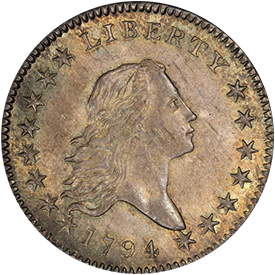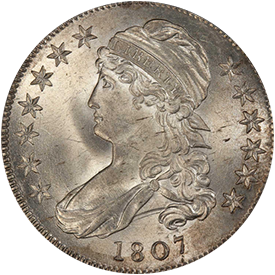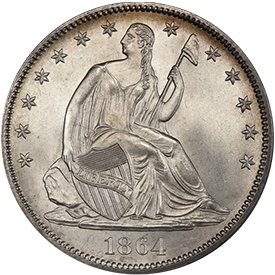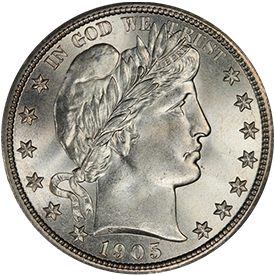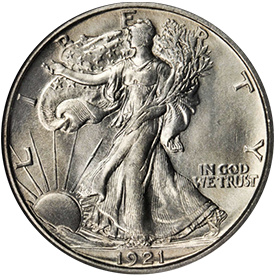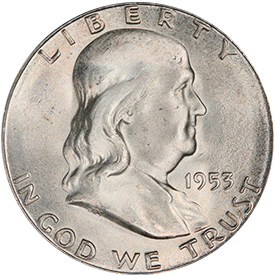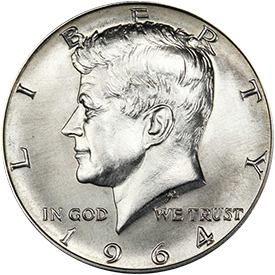The half dollar, along with the half dime and dollar got off to an early start, being among the first silver coins minted by the new Philadelphia Mint in 1794. These three coins all featured Robert Scot’s Flowing Hair design and a small eagle with wings outstretched on the reverse. The Draped Bust obverse followed in 1796, and fewer than 4,000 pieces were struck over the next two years with the small eagle reverse. This resulted in an extraordinarily rare design – easily the toughest non-gold type coin in the U.S. series. After a three-year hiatus, production of halves resumed with the heraldic eagle reverse in 1801 and since then, most half dollar types are readily available.
The Capped Bust half appeared in 1807, and lasted in some form through 1839. This series is rich with fascinating overdates and other varieties, and because these coins were typically used in transactions between banks, a great many have survived in relatively high grade. VF’s and XF’s are quite common and quite reasonably priced, and a dedicated group of numismatists avidly study and collect this series.
Liberty Seated and Barber designs followed their smaller-denomination counterparts, and not until 1916 did a unique design grace the half dollar. Adolph A. Weinman’s magnificent Walking Liberty motif made its debut that year, and is widely believed to be one of the most beautiful and artistic designs to appear on circulating U.S. coinage. So highly regarded was this work, that it was selected as the obverse design for the American Silver Eagle bullion issue in 1986.
Key dates in the half dollar series include of course the rare 1796-97 Small Eagle Draped Bust coins, 1838-O, 1878-S and numerous varieties in both the Capped Bust and Liberty Seated series. Among the more recent issues, the 1892-O (micro O) and the 1921-D and S are tough in high grade.
The Franklin design that followed has few tough dates per se, but some of the early mintmarked issues with full lines on the Liberty Bell on the reverse are both elusive and costly. After the assassination of President John F. Kennedy in late 1963, his likeness replaced Franklin’s on the half dollar. While extremely popular with the public, two changes in the metallic alloy in 1965 and 1971 confused the public, and nearly all were hoarded with few winding up in circulation. Today, the half dollar is seldom seen in circulation and beginning in 2002, the mint struck half dollars only for inclusion in sets for collectors.
